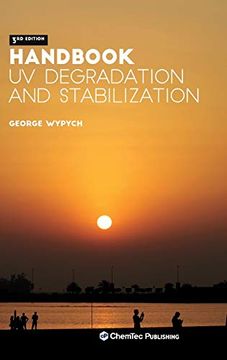Reseña del libro "Handbook of uv Degradation and Stabilization (en Inglés)"
This book contains completely updated version of previous edition with the most recent literature and patents. It has 12 chapters, each discussing different aspect of UV related phenomena occurring when materials are exposed to UV radiation. In the introduction the existing literature has been reviewed to find out how plants, animals and humans protect themselves against UV radiation. This review permits comparison of mechanisms of protection against UV used by living things and the effect of UV radiation on materials derived from natural products and polymers and rubber. Photophysics, discussed in the second chapter, helps to build understanding of physical phenomena occurring in materials when they are exposed to UV radiation. Potentially useful stabilization methods become obvious from the analysis of photophysics of the process. These effects are combined with photochemical properties of stabilizers and their mechanisms of stabilization, which is the subject of Chapter 3. Chapter 4 contains information on available UV stabilizers. It contains a sets of data prepared according to a systematic outline as listed in the Table of Contents. Stability of UV stabilizers, important for predicting lifetime of their protection is discussed in Chapter 5. Different reasons of instability are pointed out in evaluation.Principles of stabilizer selection are given in Chapter 6. Ten areas of influence of stabilizer properties and expectations from the final products were selected for discussion in this chapter. Chapters 7 and 8 give specific information on degradation and stabilization of different polymers & rubbers and final products manufactured from them, respectively. Over 50 polymers and rubbers are discussed in different sections of Chapter 7 and over 40 groups of final products, which use majority of UV stabilizers are discussed in Chapter 8. In addition, more focused information is provided in Chapter 9 for sunscreens. This is example of new developments in technology. The subjects discussed in each individual case of polymer or group of products are given in Table of Contents.Specific effects of UV stabilizers which may affect formulation because of interaction between UV stabilizers and other components of formulations are discussed in Chapter 10. Analytical methods, which are most frequently used in UV stabilization, are discussed in Chapter 11 to show their potential in further understanding of UV degradation and stabilization. The book is concluded with the effect of UV stabilizers on the health and safety of workers involved in their processing and commercial use of the products (Chapter 12).This book is an excellent companion to the Databook of UV stabilizers which has also been published recently. Both books supplement each other without repeating the same information – one contains data another theory, mechanisms of action, practical effects and implications of application.The information contained in both books is essential for automotive industry, aerospace, polymers and plastics, rubber, cosmetics, preservation of food products, and large number of industries which derive their products from polymers and rubber (e.g., adhesives, appliances, coatings, coil coated materials, construction, extruded profiles and their final products, greenhouse films, medical equipment, packaging materials, paints, pharmaceutical products, pipes and tubing, roofing materials, sealants, solar cells and collectors, siding, wire and cable, and wood).

